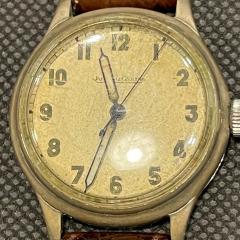Jaeger-LeCoultre Memovox cal 916 - any tips? "do not open" barrel.
-
Similar Content
-
Recently Browsing
- No registered users viewing this page.
-
Topics
-
Posts
-
I have one of those and it's OK, but I prefer the Chinese Moebius knock-off. The metal gauze isn't removable, and I find that a bit inconvenient. Also, the Horotec style bottle doesn't agitate the epilame when you turn it around. From the post I linked, it seems the Chinese Moebius knock-off bottles are about $25.
-
Well if you get the Jack & want to convert to speed control via potentiometer I can send you a wiring diagram & explain how to do it if needed it is very easy, I also changed the pulley to same size as on lathe so I could be sure the rpm on the display is correct. Dell
-
Doesn‘t look like fake, but has not to be removed.
-

.thumb.jpg.cb17a66989f1e796fd4217db2e9ca9df.jpg)








Recommended Posts
Join the conversation
You can post now and register later. If you have an account, sign in now to post with your account.
Note: Your post will require moderator approval before it will be visible.